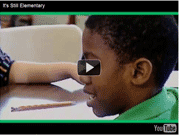Since most activist groups struggle with limited time and resources, it can be challenging to persuade them to include artists in their work. This week, Arlene Goldbard talks to filmmaker Debra Chasnoff and visual artist Beth Grossman to illustrate some of the benefits of collaborating.
Filmmaker Debra Chasnoff:
Putting a Human Face on Issues – Bringing the Facts Home Better Than a Report
Consider the work that filmmaker Debra Chasnoff and her colleagues have done through Groundspark’s Respect for All Project. By now, more than a million students have seen the five films in this series and taken part in workshops and discussions designed to bring the issues even closer to home.
It all started with It’s Elementary, a film created to give adults—parents, teachers, youth workers—ways to talk with kids about lesbian, gay, bisexual, and transgendered people. Subsequent films dealt with the incredible diversity of families today, in terms of race, ethnicity, religion, gender—and every conventional expectation; with taunting and bullying in schools and other settings; and with the challenging pressures teens face when it comes to gender and sexuality.
With moving-image media, “putting a human face” on the issues is more than a metaphor. Character-driven stories can affect us deeply, precisely because they allow us to meet and identify with real people, witnessing their real-life challenges and triumphs.
Scientists tell us that human empathy is greatly aided by the presence of mirror neurons in our brains: when we observe another person’s experience, our brains respond very much as if we’d had the same experience ourselves. One image of a real person experiencing something in real time trumps the impact of a dozen statistics.
“Film can open up people’s hearts and then their minds,” Debra Chasnoff told me. “It’s just that simple. Organizations put a lot of energy into gathering data and information about their issues, and they write reports. If they’re lucky, some people will read that material and get engaged with it, but it’s not very effective for engaging large numbers of people. Film has the potential to get people excited and passionate about the issues, and then inspire them to want to do something.”
It’s Still Elementary
When It’s Elementary was introduced, there was strong resistance to talking about LGBT issues in schools. In 1990 less than 1% of school districts had programs training staff in sexual orientation issues. Now it’s 29%.
It’s Still Elementary traces the impact of Groundspark’s earlier film. Ten years later, it features students who saw It’s Elementary in class talking about the positive effects of this ground-breaking film.
Visual Artist Beth Grossman
Engaging people in exploring direct, personal relationships to issues
In 2004, Beth Grossman was the resident artist on a ship traveling down the Volga River as part of Project Kesher’s multi-national Jewish Women’s Summit. The goal of the trip was to foster supportive relationships between Jewish women from the former Soviet Union and other parts of the world.
Beth Grossman started with the intention of compiling women’s oral histories in collage, painting, and drawing, and that mission was accomplished. But as the ship traveled and excitement built, her studio became a place of creativity and connection that infused the entire event.
“At three in the morning, when people couldn’t sleep, where did they come? To the studio,” Beth Grossman told me. “I ended up keeping it open and staying there, because the level of conversation and kibbitzing and connecting that was going on while we were working with our hands— women knowing that they were making something that was going to contribute to this ongoing project and that their voices and stories were going to be heard—was really profound.”
She says this should be part of all gatherings: “No matter what it is, if you involve people with a creative invitation, you’re going to get their best thinking. The way to access creativity and intelligence is through this sense of play and openness and communicating and imagining. It really brings us to our core intelligence.”
Women’s Histories In A Box
Beth Grossman asked women at the Project Kesher Jewish Women’s Summit to document parts of their personal stories visually using the art supplies provided and photo/collage materials they brought with them. Each one worked on a piece of 12 inch round handmade rag paper.
Click on the picture above to read more about the project or click here to see the images in the box.
Note: This bi-weekly series about successful collaborations between women artists and women’s organizations is part of the WomenArts Harmony Project.
About Arlene Golbard
Arlene Goldbard is a writer and consultant focusing on the intersection of culture, politics and spirituality. See her talks and writings at her Web site: www.arlenegoldbard.com.
Special Thanks
WomenArts is supported by generous grants from the Nathan Cummings Foundation, the Meyer Levy Charitable Foundation, the Peace Development Fund, East Bay Community Foundation, the Leo S. Guthman Fund, the Do A Little Fund, and by gifts of time, energy and money from artists and arts supporters around the world.
About WomenArts
WomenArts (formerly known as The Fund for Women Artists) is a community of artists and allies dedicated to celebrating and supporting art by and about women. For an overview of our programs and services, please see the About Us section of our website.


